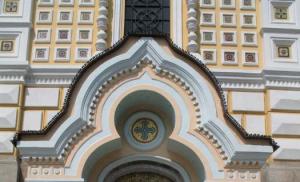Edible and false boletus - what are the differences? What boletus looks like, where it grows and what is prepared from it.
Boletus is one of the most beloved mushrooms; it is often called the “mushroom of good luck.” Finding this mushroom is not so easy, although they are large in size and have a bright cap. However, this very circumstance is the reason why mushroom pickers simply hunt for such mushrooms. These mushrooms are edible and not just edible, but very tasty. You can prepare a wide variety of dishes from them; their calorie content is relatively low, which is very valuable for those who do not want to gain weight.
Among experienced mushroom pickers, the boletus is highly valued; in value, this trophy is only slightly inferior to the real “mushroom king” - the porcini mushroom. Indeed, boletus is at the top of the ranking. In addition, boletus is not only the most big mushroom, it is very tasty and healthy.
Based on the name, it becomes clear that this mushroom is most often found under aspen trees. It often happens that boletus can be found in deciduous copses and mixed forests. Those who plan to collect them should know that they are often found in damp and shady aspen forests, where their population increases significantly. The mushroom most often grows in families, which makes it much easier to collect. However, it often grows alone, like boletus. But it is worth noting that boletus has more calories.
On the territory of Russia, a single boletus grows even in the tundra (meaning open birch forest).
Photos of boletuses
Collection time and what they look like
The very first boletuses grow in early June (however, if you want to collect these delicious ones, edible mushrooms, then you need to hurry: at this time they only grow for a week, but you can find the largest specimen). The second season begins in mid-July, then they begin to appear in abundance at the end of October, and they can be collected until the beginning of winter. The collection of boletuses ends after the first frost.
Experienced mushroom pickers know that there is such a sign: as soon as the fluff begins to fly off the aspen trees, you need to wait for the appearance of boletuses.
If we talk about what boletus looks like, then we need to take into account the fact that they come in several types. The main types are red, gray-brown and white. An aspen boletus with a bright red cap is called a redhead or redhead. The aspen boletus can be not only red, you need to know that the color of its caps can change due to its age. As for the size of its cap, its diameter can reach 30 cm. The length of the mushroom stem in most cases does not exceed 20 cm. If the stem is broken, you can observe how it gradually turns blue (but can also turn pink), and then turns black .
Boletuses are most often found under aspen trees, but this does not mean that they are not found in other places.
The mushroom is popularly called obabok or chelish.
Taste qualities
All types of such mushrooms are edible; they do not differ much in taste from each other. The calorie content of such mushrooms is such that you can get enough of them quite quickly, their taste is very original and rich. Boletus can be used for boiling, frying, pickling and pickling. It goes perfectly with buckwheat, rice and potatoes. You can cook them delicious soup in different variations (recipes for preparing dishes from this product are known to most mushroom pickers) and excellent salads. The calorie content of this mushroom is one of the reasons for its popularity. For those who love salted and dried mushrooms, boletus mushrooms are also perfect. If boletus is pickled, it can acquire a brownish tint, and it also turns blue.
Beneficial features
The benefits of these mushrooms for the body are great, since they contain many substances necessary for the human body. This tubular mushroom is very useful and contains a large number of unique substances. If we talk about the valuable substances contained in boletus, we should note proteins, carbohydrates, fiber, they also contain large amounts of iron and phosphorus. In terms of the amount of vitamin B, boletus is not inferior to the most famous grain crops. If we talk about proteins (which are very necessary for the body), then aspen boletus is not only not inferior to meat in terms of the content of this substance, but even exceeds it. Boletus contains a large amount of amino acids, which are very easily absorbed by the body.
If you cook broth from dried aspen mushrooms, then the calorie content of this tasty and healthy dish in no way inferior to meat.
Their high calorie content is the reason that they are highly recommended for those who suffer from anemia. Boletus is excellent for healing wounds, and the reason for this is the same high calorie content.
Only young boletus need to be collected, and old individuals should be ignored. What does a mushroom look like that is best left behind? It is very large and has an unattractive appearance. The largest boletus is not always a valuable trophy, since there is a risk that it contains worms.
Only fresh boletus can be eaten. You shouldn't keep a mushroom for a long time in the refrigerator, as it tends to spoil quickly. The boletus needs to be collected, cleaned and immediately cooked and nothing else. Of course, the mushroom is edible even after several days spent in the refrigerator, but every day it loses its beneficial properties.
Often, an ordinary and unremarkable trip to the forest brings many surprises that spoil the mood, be it the late time for picking mushrooms or the inability to distinguish them. So, when is it worth going for aspen boletuses and where to look for them?
The boletus can be distinguished by its tubular cap, characteristic of the entire genus, and its thick body, permeated with soft fibrous pores.
It's no secret that redheads mean several types of Lenzium mushrooms or as they are also called obobkov. This includes most representatives with a pronounced cap and stem. This type of structure is called hat-footed.
The boletus can be distinguished by its characteristic tubular cap and thick body, permeated with soft fibrous pores, which is characteristic of the entire genus.
 Boletuses grow in almost every temperate forest climate zone
Boletuses grow in almost every temperate forest climate zone
Where do aspen mushrooms grow and when to collect them?
These mushrooms grow in almost every forest in the temperate climate zone. Contrary to current stereotypes, you can find one or a whole cluster of boletuses near coniferous and deciduous trees. The best place For their livelihoods, there is still a shady area covered with tall grass near roads and paths.
The appearance of the obobok directly depends on the species and what plant it formed mycorrhiza with. The cap, small and clearly visible against the background of grass, can be not only yellow, but also gray, reddish, or light brown. As a rule, it is slightly rounded at the bottom and feels like velvet.
It’s better to go collecting boletuses at the very beginning of summer, but finish mushroom season recommended in mid-autumn. It is better to pay attention to shady places surrounded by low thickets of grass.
In which forest do aspen mushrooms grow (video)
Useful and medicinal properties of boletus
Redhead is often used as a main or additional dish in dietary nutrition due to its low calorie content. It can be the main ingredient in a soup, stew or even a salad. However, it is recommended for everyone to consume this mushroom, not just those who are losing weight, because boletus proteins are absorbed much better and faster than some types of meat.
It is noteworthy that all types of redhead can be eaten without harming your own health (this rule does not bypass people suffering from diabetes).
Types of boletus mushroom
Variegated Redhead
Representatives of this species are usually found near a birch grove. Its fairly dense structure, long scaly leg and varying width of the mushroom cap are unlikely to allow it to be confused with the faceless toadstool. It’s better not to look for anything nearby - Variegated redhead most often grows singly, attracting attention with its pale brown or orangeish skin color.
Pine obabok
This mushroom likes to hide in damp, well-saturated areas located near pine trees or swamps. The redhead reveals its presence only by the bright red or crimson color of its wide cap and long, gray-speckled leg (most often it does not exceed 15 cm in length).
 Pine obabok
Pine obabok Spruce boletus
If you come across this species of redhead on your way, be sure to look around, because these mushrooms prefer to grow in small groups in the shade coniferous trees. The firm flesh has a dark brown tint, but the skin, on the contrary, will delight you with a light brown tint.
White boletus
The huge (from 20 cm) white or brownish-beige cap of this mushroom peeks out in damp pine and spruce forests, less often - in birch thickets. Like any other boletus, white boletus is edible and does not pose a threat to human health.
Not everyone can find such mushroom prey: this type of redhead is quite rare in middle lane Russia.
Oak boletus
You will have to find it in the enchanting oak thickets. A small chestnut hat on a thick, rough stem will not be the only one, because mushrooms of this type do not grow alone. Their life span spans summer and early autumn.
 Oak boletus
Oak boletus Red boletus
Clusters of pine and bearberry will certainly please beginners and experienced mushroom pickers with a harvest of red mushrooms. The bright cap, tightly fitting to the stem, is unlikely to be invisible near well-trodden forest paths or aspen stands. It rarely grows alone and is not poisonous to humans.
Painted redhead
Unfortunately, only residents of Asia can find such a mushroom. The boletus is famous for its fruit body covered with pinkish spots and its slightly curved cap. Despite everything, the mushroom is loved not only by people, but also by insects, so finding it untouched by the small inhabitants of the forest is a really difficult task.
 Painted redhead
Painted redhead Blackscaled Butterfly
In front of you is a red hat slightly curved upward and a leg entwined with black scattering? Then don’t hesitate and hesitate to make your choice – feel free to add it to your cart and carefully look around.
The black-scaled mushroom can also be recognized by its hard fibers, which maintain a shape so attractive to the fungus.
Spruce redhead
If the boletus you find has a thin orange skin, then most likely you found it in a mixed or coniferous forest. This mushroom appears only in mid-July and grows until the beginning of October, puzzling mushroom pickers - this is one of the few boletuses whose cap has scales.
 Spruce redhead
Spruce redhead What does a false boletus look like?
For some reason, among most mushroom pickers there is a legend about the so-called false boletus. But is it real, and what mushroom can redcap be confused with? We suggest that you look into this issue, avoiding accidental and dangerous finds.
It’s worth starting with the fact that there are no false assumptions. They are most often mistaken for poisonous gall mushroom having lighter skin. You can distinguish it from boletus by other parameters:
- The cap of the gall mushroom has a larger diameter than the cap of the boletus.
- The tall and dense leg of a real boletus is decorated with small black scales, but the leg of a “false” boletus is decorated with large gray cracks and fibers.
How to cook boletus (video)
Why is the boletus called that?
The name boletus is easily explained by the fact that this mushroom is most often found in young aspen trees. In addition to boletus, the mushroom has such names as obabok, vanka-vstanka and, of course, redhead. It owes such names only to mushroom pickers of long-gone years, its own structure and unusual color.
Finally, I would like to wish every beginner and even experienced mushroom picker to come across a whole clearing of such a wonderful harvest, which has truly unique taste properties. Do not forget that he can wait for you not only under young aspens, but also under other trees, hiding among sparse grass.
Post Views: 102
Bright boletus hat cannot be confused with any other mushroom. He stands proudly on a strong leg, his noble look will please any mushroom picker. The orange cap burns with a warm light in the foliage.
Boletus names
Boletus- This common name mushrooms belonging to the genus Leccinum. Almost all boletuses have a red or orange cap, a stocky leg and dense flesh. There are several types of boletuses, the most common boletuses are red, yellow-brown, oak, spruce, pine.
Popularly called Boletus: aspen mushroom, redhead, red cap, red cap, robin, vanka-vstanka, red mushroom, red cap, obabok.
Where does the boletus grow?
Boletus It is found frequently and in places abundantly in almost all forested areas of the country. Contrary to the name Boletus grows not only under aspen trees, but also under birch trees, in coniferous and deciduous forests, on the edges and forest clearings, but, most often, of course, in aspen forests.
Boletus prefers deciduous and mixed forests, small forests and young aspen trees (for which this mushroom got its name), less often it can be found on the edges or along roads. Boletuses grow both singly and in groups, from the first half of June to October.
What does Boletus look like?
Boletus- a beautiful large mushroom with a fleshy cap with a diameter of 15-20 cm. At first the cap is hemispherical, then convex to cushion-shaped. The color of the cap comes in different shades depending on the place of growth.
In pure aspen trees the color of the cap is red or dark red; in mixed forests orange or yellow-red; in poplars - gray; in damp forests - white-pink. In the north, the Boletus grows with a yellowish-brown color, the leg is covered with dark scales. In the forest-tundra, boletuses reach very large sizes and weigh up to 2 kg.
Boletus leg strong, fleshy, white with oblong scales.
The maximum mass is reached by the tenth day of growth, then the mushroom ages, becomes flabby and worm-like.
Fresh Boletus has strong white flesh, coarser than that of boletus, its characteristic feature is that when cut (or at a break), it begins to quickly change color: first it becomes pink, then dark blue and even black. This is a consequence of the fact that the pigments of the fungus oxidize under the action of enzymes in air, changing color. Changing the color of the boletus pulp does not affect the nutritional and taste properties of the mushrooms.
Boletus. Collection time
The boletus is very beautiful, and it is always a great joy to find it. The first mushrooms begin to appear in mid-June and can be found until October if there is no frost.
How is Boletus useful?
Boletus contain squirrels, fiber, carbohydrates, minerals, fats. They contain a lot of potassium, iron and phosphorus, as well as vitamins A, C, PP and group B.
Boletuses have a lot of proteins (more than meat). Boletuses also contain many valuable amino acids, which are essential in restoring a weakened body, which is why these mushrooms are recommended for use by people who have suffered infectious diseases, surgeries, or inflammatory diseases.
Boletus. Contraindications
Storing boletus
Boletus in their own way taste qualities And nutritional properties is in no way inferior to the boletus, but rather shares with it the second place of honor after porcini mushroom. Boletuses are boiled, fried, dried, pickled, salted, using both the cap and the stem (although some consider it a bit harsh). When processed, Boletus, as a rule, darkens, only in the marinade it retains natural look.
How to cook boletus
Boletus- although the mushroom is noble, it still requires heat treatment. Processing mushrooms should not be delayed; they spoil quickly.
Boletus boiled 20 minutes. Can be done mushroom soup from Podosinoviki.
Boletuses are fried 30-40 minutes.
Drying boletuses
Clear the boletuses from twigs, grass and soil.
Before drying Boletuses cannot be washed! Mushrooms take on water very quickly, and washed mushrooms cannot be dried.
Little Boletus dried whole, large ones cut, but not small. It is best to dry on a thread or in the oven. The oven temperature should be set at 50-60 degrees - this is the minimum available mode and the door is slightly open. Some oven models will require you to open the door completely due to the inability to lower the temperature. Dry the mushrooms on a baking sheet lined with parchment. Place on the top shelf.
Boletus. Interesting Facts
Boletus broth It is not inferior in nutritional value to meat broth.
The boletus differs from the boletus in having a thicker and stockier stem, as well as in the characteristic dense flesh of the cap. Several species of boletus grow on the territory of our country. Fruiting body of mushrooms different types may vary in size, shape and basic coloring of the skin on the cap, as well as the color of the surface of the stem.
| Species name | Latin | Description of the cap | Characteristics of the leg | Features of the view |
| Red boletus | Leccinum aurantiacum | Hemispherical in shape, with the edges tightly pressed to the stem, easily detachable and covered with red, orange or brown-red, smooth or slightly velvety skin | Solid, grayish-white, with longitudinal fibrous scales | When cut, the flesh quickly turns blue and then turns black. |
| Red-brown boletus | Leccinum versipelle | Hemispherical in shape, covered with dry orange-yellow or yellow-brown skin | Stocky, thickened at the bottom, white or grayish, with brown scales | When cut, the flesh first turns pink and then turns blue. |
| White aspen | Leccinum percandidum | Hemispherical in shape, covered with white or pinkish-white dark shade, dry skin | Tall, with a club-shaped thickening in the lower part and dark fibrous scales | When cut, the flesh first turns blue and then turns black. |
| Redhead oak | Leccinum quercinum | Hemispherical in shape, covered with brown with an orangish tint, slightly hanging skin | Cylindrical in shape, with a slight thickening at the base, covered with reddish scales | The pulp turns black when cut |
| Colored-legged boletus | Leccinum chromapes | Pinkish, convex or flattened in shape, dry and smooth | Smooth, cylindrical, with scales on the surface | The presence of very dense white pulp |
Photo gallery








Where does it grow and when to collect
Most representatives of this genus form mycorrhizae with aspens. The exception is the red boletus, which has no preference in choosing partner plants and is capable of entering into symbiotic relationships with almost any deciduous trees. Most often, this fungus grows under aspen and poplar trees, and can also form mycorrhiza with oak, beech, and birch plantings.

During the dry period, boletus most often grows in areas with sufficient humidity. This popular tubular mushroom grows singly or in rare groups. It is collected from mid-June to October. Boletuses are characterized by fruiting in three waves. The third wave is the most abundant, from mid-August to mid-September.
When collecting boletuses, overgrown mushrooms should be left in the forest so as not to reduce the number of edible mushrooms, because the large fruiting body of the boletus contains many spores. It is important to remember that darkening mushroom pulp can accumulate very quickly. toxic substances, which makes it necessary to process the collected boletus as quickly as possible.
Boletus: characteristics (video)
Distinctive features of the false variety
False boletus as such is not found in our forests. Most often, inexperienced mushroom pickers confuse boletus with the inedible and quite common pepper mushroom (Tylopilus felleus) in our country.
This species grows in conifers, which is not typical for most boletus species. The shape of bitterling and boletus is very similar, and the main difference between the mushrooms is the mesh pattern on the stem. It should be remembered that Tylopilus felleus is inedible, but not poisonous mushroom

. Its pulp, even after prolonged heat treatment, remains very bitter and unsuitable for consumption.
Cooking recipes All types of boletus belong to the second category in terms of indicators nutritional value , and have dense and elastic pulp with slight sourness. Cooking boletus mushrooms is quite easy and quick.
They make both first and second courses, as well as filling for baked goods.
Soup with croutons Particularly popular is mushroom soup with croutons, for the preparation of which you will need ½ kg of boletus, a tablespoon of flour, four tablespoons of butter, herbs, pepper and salt to taste.
- The cooking process is simple:
- collected boletuses should be thoroughly cleaned of forest debris and washed;
- prepared mushrooms must be cut into slices or strips and placed in boiling salted water; wheat flour needs to be diluted warm water
, after which the mixture should be poured into the mushroom broth, adding butter.

To improve the taste and aroma of the soup, it is necessary to steep for 5-7 minutes, after which finely chopped greens are added. You can serve sour cream and croutons with the soup.
Boletus with potatoes One of the most favorite second mushroom dishes is fried boletus with potatoes. For cooking you will need a kilogram of potatoes, about 55 g dried mushrooms , a couple of onions, a couple of tablespoons of ghee, salt and fresh herbs to taste.
- The dish is prepared like this:
- fry the potatoes in a well-heated frying pan until a nice golden crust forms;
- pre-soaked mushrooms and onions cut into thin rings should be well fried in oil;
- combine the fried onion-mushroom mixture with potatoes and add salt to taste;
- place in a well-heated oven and bring to full readiness.
Any salad made from fresh or canned vegetables, as well as chopped fresh herbs, goes very well with this dish.










Mushroom caviar
Worthy cold snack is mushroom caviar from fresh boletus, for the preparation of which you will need 0.25 kg of mushrooms, a couple of onions, four tablespoons of refined oil, as well as salt and ground pepper to taste. The cooking process includes the following steps:
- Boletus trees should be thoroughly cleaned of forest debris and washed several times;
- coarsely chop clean mushrooms and boil for 45 minutes;
- drain the mushroom broth and cool the mushrooms;
- pass the cooled boletus through a meat grinder or grind in a blender;
- add onions fried until golden brown and mix well mushroom caviar until smooth.
How to pickle boletus (video)
Boletuses are very often used for drying, pickling and salting. For home canning It is recommended to select the strongest, not overgrown, young specimens. It is important to note that mushrooms to be dried should be cleaned without using water. You can dry aspen boletuses in the open air, but it is best to dry them in special devices for drying vegetables and fruits or in a regular oven. Marinated and salted mushrooms can be used not only as a separate dish, but also for preparing cold appetizers, as one of the ingredients in salads, vinaigrette or mushroom pate.
In terms of nutritional value, aspen boletus belongs to the second category, but due to its taste, it is the leader in popularity among mushroom pickers. This mushroom is great not only for eating during the season, but also for aromatic preparations that will allow you to feel the taste of summer on winter days.
How is this product useful, when and where to collect boletus mushrooms, how to distinguish them and what dangers should you be prepared for? This will be discussed below. So, let's look at the boletus.
Boletus description.
The genus to which all varieties of boletus belong is called Leccinum, or Obabok. Absolutely all varieties of boletus are edible and safe, but it is important to be able to distinguish them from dangerous doubles.
Boletuses are large mushrooms with a fleshy stem and a cap of a red-orange, sometimes white hue. On early stages growth may resemble porcini mushrooms, later a little like boletus mushrooms. To have a complete understanding of boletuses, let’s look at their varieties with a description of their characteristics.

- Red boletus.
The most common variety. The cap of this mushroom at an early stage of growth is hemispherical in shape and red in color if it grows in an aspen grove. In mixed foxes, the cap of the red boletus is yellow-red, while those growing under poplars are distinguished by a grayish tint. The cap is covered with a dense velvety skin and can reach a maximum diameter of 30 cm. But such large mushrooms are extremely rare; as a rule, the diameter of the red boletus cap ranges from 5-14 cm.
On inside a loose tubular layer from 1 to 3 cm, with rounded pores that darken slightly when touched. The leg grows from 5 to 15 cm, covered with longitudinal scales of a fibrous texture, which over time acquire a brown tint. It is important to pay attention to the spore layer - it has a brown tint, and the spores themselves are spindle-shaped.

- Brown-yellow boletus.
This mushroom grows on a long stalk, the height of which is from 8 to 2 cm, and is partially hidden underground. The leg is light or grayish in color, with a scaly surface that darkens over time. The caps of young mushrooms are initially hemispherical, and then become cushion-shaped, yellow-brown or brown-orange in color, with rough, dry skin.
The tubular layer is loose, with angular-rounded pores, which initially have a grayish tint, and later can become brown or olive. The spores are smooth, olive in color and fusiform in shape. The peculiarity of the variety is that at the cut site the pulp changes color over time - gradually becomes pinkish, then turns blue and acquires a dark purple hue.

- White boletus.
A special variety of boletus, as it differs in the typical white color of its cap and stem. At the beginning of growth, the cap is hemispherical in shape, and then changes to cushion-shaped. At the base, the leg may acquire a bluish tint. The surface is smooth and dry. The diameter of the cap can reach from 5 to 25 cm, and the height of the stem can range from 5 to 22 cm.
Over time, the surface of the leg becomes covered with gray-brown scales. The tubular layer may be white or yellowish-gray in old boletuses. The color of the spore powder is ocher. The peculiarity is that at the cut site you can notice a sharp darkening of the pulp, and in the stem area it acquires a pinkish-purple hue.

- Painted-legged boletus.
In many respects, this variety is similar to the previous ones. But it is distinguished by a wider, convex cap and pinkish color of scaly legs. The average height of the mushroom stem is from 5 to 20 cm, and the diameter of the cap is no more than 25 cm. The tubular layer can be pinkish in color with a golden tint.
The thickness of the tubular layer is no more than 1.5 cm. The spore powder is brownish-pinkish or yellow-pink, depending on the age of the fungus. The colored-legged boletus is distinguished by white, dense flesh, which does not darken as quickly as in previous varieties.
Where does boletus grow and when to collect it?
In addition to the varieties discussed, there are others that are subject to variability depending on the area and conditions in which they grow. The first boletuses may appear in the forests as early as early to mid-June. The boletus growing season ends in September. Where can you find boletus? Below is a list of places where this mushroom grows.
- First of all, as the name implies, you need to look for the mushroom in aspen trees. In aspen forests and groves these mushrooms grow in large quantities, and not only after the rains. During the dry season, you can find boletus growing in very shaded plantings.
- Boletus can also grow in birch and mixed forests. As a rule, the mushroom looks a little different - it has a brown-yellow cap. The mushroom grows during the rainy seasons in small families - for each specimen there are up to 15-20 more of the same kind.
- In addition, boletus can be found among pine trees. It has a red-brown cap and grows in groups of 5 or more. The best mushrooms in pine forests grow after warm rains in slightly shaded areas.

False boletus.
When picking mushrooms, you must not forget about your own safety. Many edible mushrooms have dangerous doubles that external characteristics very similar, but at the same time contain harmful, toxic substances. The boletus is no exception. There is a dangerous variety that has similar characteristics, but it is still easy to distinguish it from the edible boletus. Pepper mushroom (scientific name - Tylopilus felleus), which is also popularly called mustard, is distinguished by a reticulate pattern on the stalk, a very bitter taste and a pink tubular layer. At the point of cutting, the flesh of the bitterling quickly turns pink.
The benefits and harms of boletus.
Eating boletus is not recommended for everyone, since this mushroom is not considered dietary product. Due to the high content of lithium and chitin, this product is contraindicated for people suffering from chronic diseases of the kidneys, liver, gallbladder and pancreas. In addition, boletus is not recommended for pregnant women, as well as during breastfeeding. But there are still more benefits from the product. Let's consider what beneficial mushroom pulp contains.
- The pulp of the mushroom contains a mass minerals in high concentration. Among them, potassium and phosphorus - up to half daily norm in 100 grams. Also contains iron, lithium, calcium, sodium, magnesium. All these minerals are involved in the regulation of water-salt metabolism and are important for nervous system and the implementation of hematopoietic processes.
- The mushroom is also rich in vitamins. It contains a record amount of vitamin PP, as well as B vitamins, ascorbic acid, and tocopherol.
- Mushrooms are the source special type proteins that are easily absorbed by the body. This is an ideal dietary supplement for weight watchers and vegetarians.
Boletus retains most of its valuable substances during heat treatment. It is also useful to eat dried and canned.















